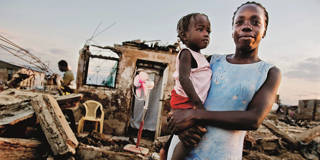
Debt-for-Climate Swaps Make Sense
The COVID-19 pandemic has left most low-income countries in or on the verge of debt distress, just as the urgency of the climate crisis has become clear for all to see. Though solutions to each problem are not always fully aligned, instruments for addressing both simultaneously should be on the financial menu.
GENEVA – What if there was a magic bullet to address the climate crisis, the pandemic-induced debt crunch, and the need to boost development finance all at once?